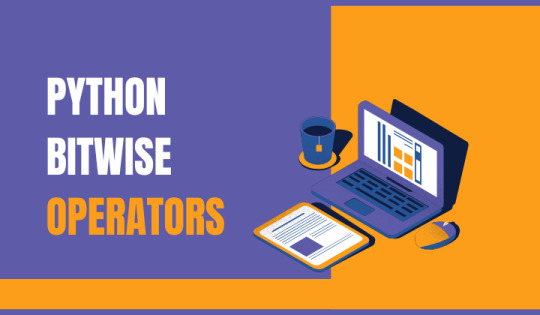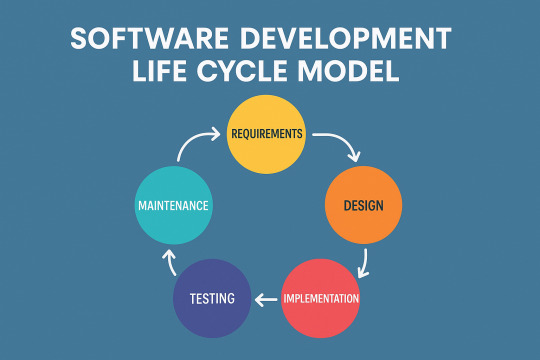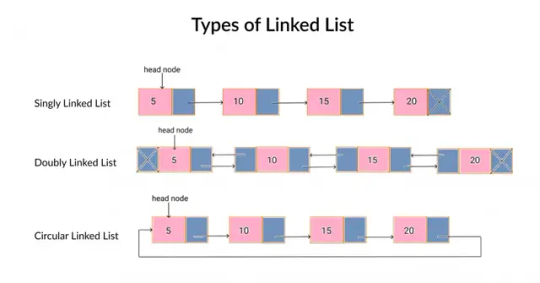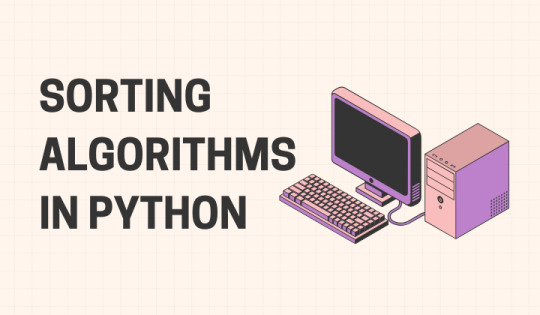#prepinsta
Explore tagged Tumblr posts
Text
Python Bitwise Operators
Bitwise operators in Python work directly with binary numbers (0s and 1s), which are how computers understand data. They are useful when you want to perform fast and efficient calculations, especially in programming tasks like encryption, compression, or low-level data handling. Instead of dealing with full numbers, these operators compare individual bits of those numbers. Learning them can help you write better-performing code.

Important Bitwise Operators in Python
AND (&) – Compares bits of two numbers and gives 1 only if both bits are 1. Otherwise, it gives 0.
OR (|) – Returns 1 if at least one of the compared bits is 1. It gives 0 only if both bits are 0.
XOR (^) – Gives 1 when the two bits are different. If they are the same, the result is 0.
NOT (~) – Flips every bit in a number. 0 becomes 1, and 1 becomes 0, effectively turning the number negative.
Left Shift (<<) – Moves bits to the left, which is like multiplying the number by 2 for every shift.
Right Shift (>>) – Moves bits to the right, which works like dividing the number by 2 for every shift.
For more detailed information, you can visit the original article: Python Bitwise Operators | PrepInsta.
#software#courses#coding#python#python course#online courses#prepinsta#jobsearch#jobs#online jobs#working
3 notes
·
View notes
Text
How do I get prepared for TCS technical interview questions?
Cracking the TCS Technical Interview – Here's How to Prepare
If you're getting ready for TCS placements, the first thing you need to understand is the TCS recruitment process. TCS mostly hires through the TCS NQT (National Qualifier Test), and the selection happens in multiple stages.
TCS Recruitment Process
Online Assessment (TCS NQT) This is the first step, where you’ll be tested across several sections:
Numerical Ability – Covers basic math topics like percentages, profit and loss, time and work, etc.
Verbal Ability – Includes English grammar, reading comprehension, sentence correction, and vocabulary.
Reasoning Ability – Focuses on puzzles, sequences, and logical thinking.
Programming Logic – Basic programming concepts such as loops, functions, and conditionals.
Coding Round – You’ll be asked to solve coding problems using C, C++, Java, or Python.
Technical Interview Once you clear the online assessment, you'll move on to the technical interview. This round includes questions on:
Programming languages like C, C++, Java, or Python
Data Structures and Algorithms – Arrays, Linked Lists, Searching, Sorting, and more
Object-Oriented Programming – Classes, Inheritance, Polymorphism, and other core concepts
Database Management – SQL queries, normalization, joins, and other DBMS topics
Managerial and HR Interview These final rounds evaluate your communication skills, attitude, problem-solving approach, and ability to work in a team. You may also be asked about your final year project and previous experiences.
How to Prepare for TCS Interviews
Start with the basics – make sure your programming fundamentals are clear.
Practice coding questions every day to strengthen your logic and problem-solving skills.
Refer to our blog on TCS NQT Coding Questions and Answers 2025 for real practice problems.
If you're aiming for a higher package, check out the TCS NQT Advanced Coding Questions as well.
Prepare well for your final year project – interviewers often ask detailed questions about it.
Taking mock interviews and practice tests can help you gain confidence and improve your performance.
For complete resources, including sample papers and the latest updates, visit our TCS Dashboard here: TCS Dashboard – PrepInsta
Start preparing the smart way and increase your chances of landing the job.
1 note
·
View note
Text
MOU Signing Ceremony!!



MOU Signing Ceremony!! Dronacharya Group of Institutions, Greater Noida signed a MOU with PrepInsta. This collaboration signifies our shared commitment to providing world-class education, fostering innovation, and nurturing the leaders of tomorrow. Looking forward for a great association together.
#prepinsta#placements#tpos#collegepartnership#training#Education#engineeringcollege#g20#cbseboard#cbseboard2023#delhincr#aicte#topprivateengineeringcollegeingreaternoida#bestengineeringcollegeindelhincr#DronacharyaGroupofInstitutions#multipleplacement#greaternoida#uttarpradesh
0 notes
Text
SDLC? Oh, it's the game plan behind every good software.
SDLC stands for Software Development Life Cycle, and it's basically the blueprint developers follow when building software. It breaks the whole thing down into clear steps so nobody’s lost in the sauce.
Here’s the usual flow: 👂 Requirement Gathering – What do users actually want? 🧠 Design – Map out how things should look and work. 💻 Development – Write the code, make the magic happen. 🧪 Testing – Find and squash the bugs. 🚀 Deployment – Send it out into the world. 🛠 Maintenance – Fix issues and keep it fresh.
It’s like building a house, but for software. No one skips to the roof first — you need that foundation.
Different projects might use different SDLC models (like Agile if you like working in sprints, or Waterfall if you’re all about that step-by-step life).
Wanna go deeper? Here’s a great breakdown: 👉 SDLC on PrepInsta

2 notes
·
View notes
Text
Online Best Campus Aptitude Tests to Prepare for Placement Success
Campus recruitment is a critical phase for college students aspiring to start their careers with top companies. One of the most crucial components of these recruitment drives is the aptitude test. With the rise of digital learning, many platforms now offer online campus aptitude tests that help students prepare effectively and perform confidently.

Why Online Campus Aptitude Tests Matter
Aptitude tests assess a candidate’s logical reasoning, quantitative ability, verbal skills, and problem-solving capabilities. Cracking these tests is often the first step to securing interviews with top recruiters like TCS, Infosys, Wipro, Cognizant, Accenture, and more.
Features of the Best Online Campus Aptitude Tests
✅ Real Exam Pattern Simulation Get test series designed based on the latest placement patterns of MNCs.
✅ Timed Practice Tests Build speed and accuracy with full-length, time-bound tests.
✅ Detailed Performance Reports Analyze your strengths and weaknesses with detailed analytics.
✅ Topic-wise Practice Sets Practice focused areas like arithmetic, logical reasoning, data interpretation, and verbal reasoning.
✅ Accessible Anytime, Anywhere Prepare at your own pace with mobile and desktop access.
Best Platforms Offering Online Campus Aptitude Tests
Here are some top-rated platforms to find the best online campus aptitude tests:
Brainwiz – Offers high-quality mock tests, personalized feedback, and reasoning classes for placement prep.
Testbook – Known for topic-wise quizzes and mock exams tailored to campus recruitment.
IndiaBix – Free platform with thousands of aptitude and reasoning practice questions.
PrepInsta – Specializes in company-specific placement test preparation.
TalentSprint – Offers coding and aptitude assessments with analytics.
Key Topics Covered in Online Aptitude Tests
Quantitative Aptitude: Percentages, Profit & Loss, Time-Speed-Distance
Logical Reasoning: Puzzles, Blood Relations, Coding-Decoding
Verbal Ability: Reading Comprehension, Sentence Correction
Data Interpretation & Analysis
Analytical Thinking
Final Thoughts
Preparing for campus placements doesn’t have to be overwhelming. With the best online campus aptitude tests, you can systematically improve your skills, gain confidence, and boost your chances of landing your dream job. Platforms like Brainwiz and others offer complete test prep solutions to make your journey smoother and more efficient.
Start practicing today with the best online resources and stay ahead of the competition!
Keywords Included:
Online best campus aptitude tests
Best aptitude tests for campus placements
Campus recruitment test preparation
Reasoning and aptitude test online
Online aptitude test for placement
Placement preparation online classes
Would you like this turned into a comparison chart or a downloadable guide for students?
0 notes
Text
Lessons From My Placement Journey: Do’s and Don’ts

A combination of groundwork, temper, and relentless pursuit is the recipe for landing a job. Upon graduation, I commenced my job search with a lot of enthusiasm; however, things took a different turn than what I had imagined. Things haven’t been easy, but from my difficult journey, I hope that you may be able to follow the strategies that I found effective and learn from the challenges that I went through.
I am pleased to share a compilation that is a blend of compact tips based on my practices, which I hope will add value to your search.
DO's
1. BE AHEAD OF ALL
The start of every new experience or step comes with nerves running wild. Be prepared at least 3 to 6 months ahead of time before placement season starts. It is essential to work on your exercises and have a well-set-out schedule along with ample CV aid. One reason why I struggled was time mismanagement. It’s never too late to practice interviews and polish your skills, create your cv, etc.
Pro tip: Seek out a college prep group or placement club. They go a long way in keeping you prepped up.
2. AVOID SENDING THE SAME CV
The tailored approach always works; therefore, I recommend preparing a separate tailored CV for each job. No one goes to different dinner parties clad in the same attire, so why should resumes be any different? Find a way to stick out from the rest. The replenishing tasks are limited to focusing your resume on skills and projects directly related to the target role.
3. HAVE MOCK INTERVIEWS SESSIONS
I did not believe how stressful an interview could be. Practicing with friends or even in front of a mirror helped me maintain my confidence and calm demeanor.
It helps to record yourself and critique your answers to questions such as ‘Tell me about yourself.’
4. BASIC SKILLS GIVE YOU THE ABILITY TO LEARN WITHOUT TRAINING AND USE LOGICAL REASONING
Even companies in design fields have a use for aptitude tests as a filtering system. Make sure you keep up with this — I did, and it saved me!
Helpful sites include YouTube, IndiaBix, and PrepInsta.
5. FOLLOWING UP THE MEETING/INTERVIEW
If you think the interview went well, feel free to follow up with a polite email. It displays professionalism and interest on your part.
DON’Ts.... click to know more
#placement firm#placement agency mumbai#Recruitment agency#Job Placement Consultants#placement consultancy#Recruitment company#Recruitment Firm#recruitment planning#Executive Recruitment mumbai#employment agencies
0 notes
Text
SNS College Chairman Dr. S N Subramanian Collaborates SNS Group Of Institutions With Prepinsta To Train The Next Generation Of Engineers
PrepInsta, India’s no 1 and most visited website for placement preparation, and a rising Ed-tech brand, has announced associating with SNS Group of Institutions, Coimbatore to train the next generation of innovative engineers. Students of SNS Group of Institutions will have access to exclusive content on the PrepInsta website for placement preparations, says Dr. S N Subramanian, SNS College Chairman.

Both parties have signed a Memorandum of Understanding (MOU) for the next four years, until 2025. PrepInsta and SNS Group of Institutions have onboarded more than 5000+ Engineering students through this partnership, with the mutual motto of upskilling them through placement preparation courses and enabling them to land in their dream companies. According to the SNS College Chairman, Dr. S N Subramanian, SNS Group of Institutions will largely benefit from this association as they now will have a single POC for their training and placement preparations.
PrepInsta will facilitate SNS Group of Institutions with – full access to prepInstaprime.com & prepinsta.com (including Mocks & Video Learning content), premium WhatsApp group for Jobs updates from various service-based and Product based companies, premium Teacher Assistance Group (TA Support) for real-time doubt resolution over discord and exclusive performance tracking dashboard for college so that they can keep a check on students’ reports.
“At SNS Group of Institutions we are thrilled to have joined hands with PrepInsta which shares the same motto of upskilling engineering graduates as we do. In recent years, the role of technology has become dominant, and its impact on education and employability will be felt much more extensively. It’s, therefore, critical to begin incorporating tech-driven learning concepts into the curriculum based on their relevance to different age groups. With the support of PrepInsta, we are determined to bring a significant change and help our student community towards employability and skill development”, said Dr. S.N Subramanian, SNS College chairman.
Students of SNS Group of Institutions will also have access to exclusive content on the PrepInsta website for placement preparations for product-based companies like (Amazon, Microsoft, Meta etc.) and service-based companies such as (Wipro, Cognizant, Infosys etc.), SNS College Chairman, Dr. S.N Subramanian added.
1 note
·
View note
Text
PrepInsta appoints Vaibhav Jain as its new Chief of Staff-Marketing and Strategy
PrepInsta appoints Vaibhav Jain as its new Chief of Staff-Marketing and Strategy
PrepInstaIndia’s most popular and visited placement website, has announced recruitment Vaibhav Jain is the new Chief of Staff – Marketing and Strategy. Vaibhav brings industry experience in content management, marketing and production to his new role at PrepInsta. In her new role, she will be responsible for growing PrepInsta’s membership among first- and second-year students. He will also…

View On WordPress
0 notes
Text
Operation Placement – Cohort-Based Placement Training

Operation Placement is a power-packed, cohort-based training program designed to transform your placement preparation journey. Tailored for final year students and job seekers in tech, this course brings together everything you need from aptitude to advanced coding, from soft skills to system design all under one expertly structured program. Whether you're preparing for product-based companies or service giants, Operation Placement helps you build the right skillset and mindset to crack your dream job.
What You’ll Get
80+ hrs live & 200+ hrs recorded sessions
Full prep: Aptitude, DSA, DBMS, OS, CN, etc.
2 real-world capstone projects
Resume & LinkedIn/GitHub optimization
Join Operation Placement now and boost your chances with expert-led training and real interview practice.
Explore the course
0 notes
Text
Linked List in Python
A linked list is a dynamic data structure used to store elements in a linear order, where each element (called a node) points to the next. Unlike Python lists that use contiguous memory, linked lists offer flexibility in memory allocation, making them ideal for situations where the size of the data isn’t fixed or changes frequently.

In Python, linked lists aren’t built-in but can be implemented using classes. Each node contains two parts: the data and a reference to the next node. The list is managed using a class that tracks the starting node, known as the head.
Node Structure: Contains data and next (pointer to the next node).
Types:
Singly Linked List
Doubly Linked List
Circular Linked List
Operations: Insertion, deletion, and traversal.
Advantages:
Dynamic size
Efficient insertions/deletions
Disadvantages:
Slower access (no random indexing)
Extra memory for pointers
Want to master linked lists and other data structures in Python? PrepInsta has you covered with beginner-friendly explanations and practice problems.
Explore Linked Lists with PrepInsta
2 notes
·
View notes
Text
Analysis of the Algorithm
Algorithm analysis refers to the determination of how efficient an algorithm is in terms of time and space complexity. It enables us to select the most efficient algorithm depending on input size and system resources. The main objective is to forecast performance prior to code execution. Time complexity analyzes the time taken during execution, whereas space complexity analyzes the usage of memory. It assists in scalable and efficient code writing.

Time Complexity: Measures the number of operations an algorithm performs as input size increases (e.g., O(n), O(log n)).
Space Complexity: Evaluates the amount of memory required by the algorithm during execution.
Want to master algorithm analysis in Python? Check out PrepInsta’s detailed guide here: 👉 Analysis of the Algorithm – PrepInsta
1 note
·
View note
Text
Bubble Sort in Python
Bubble Sort is a basic comparison-based sorting algorithm that works by repeatedly swapping adjacent elements if they are in the wrong order. The largest values “bubble up” to the end of the list with each pass, gradually sorting the entire list. Although it's easy to understand and code especially in Python using loops Bubble Sort is not efficient for large datasets due to its O(n²) time complexity.
However, an optimized version includes a flag to check if any swaps occurred in a pass, allowing early termination when the list becomes sorted. This makes it a valuable learning tool in data structures and algorithms, despite not being suitable for performance-critical applications.

Bubble Sort is ideal for beginners to grasp the fundamentals of sorting logic and iterative operations.
Its practical use is limited algorithms like Merge Sort or Quick Sort are better suited for real-world problems.
Enhance your understanding of sorting algorithms and Python programming with PrepInsta’s expertly curated DSA course built to make coding interviews simpler and smarter. Check out the full guide here: PrepInsta – Bubble Sort in Python
1 note
·
View note
Text
sorting algorithms in python
Sorting algorithms are fundamental in computer science for organizing data efficiently. In Python, sorting can be easily done using built-in functions like sorted() and .sort(), which implement the highly optimized Timsort algorithm. Besides these, classical sorting methods like Bubble Sort, Insertion Sort, Selection Sort, Quick Sort, and Merge Sort are essential for understanding algorithmic thinking and problem solving.
Each algorithm has its unique approach, time complexity, and practical use cases. Choosing the right sorting algorithm depends on factors such as data size, stability requirements, and performance constraints.

Built-in Sorting in Python: Python’s sorted() function and .sort() method are easy to use and highly efficient, employing Timsort, which combines merge sort and insertion sort advantages.
Simple Algorithms: Bubble Sort, Insertion Sort, and Selection Sort are intuitive to understand but generally less efficient for large datasets, making them ideal for learning basic concepts.
Divide and Conquer: Quick Sort and Merge Sort use recursive approaches to break down problems into smaller parts, enabling faster sorting for bigger and more complex data.
Algorithm Stability: Some sorting algorithms maintain the relative order of equal elements (stable), which can be crucial in applications like database sorting.
Boost your coding skills and master algorithms with PrepInsta your go-to platform for detailed tutorials and practice questions in data structures and algorithms
1 note
·
View note